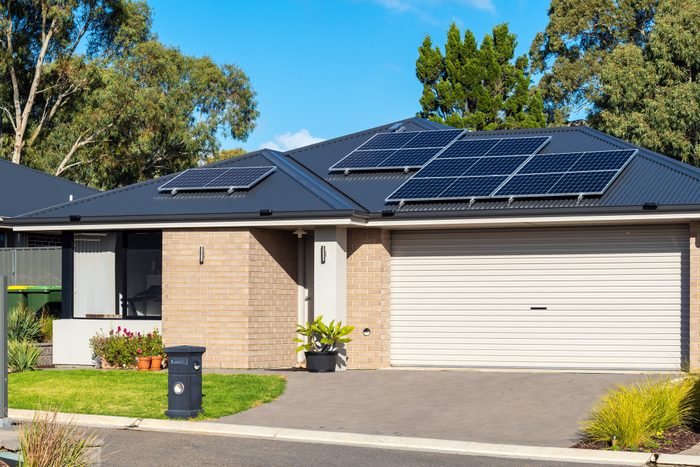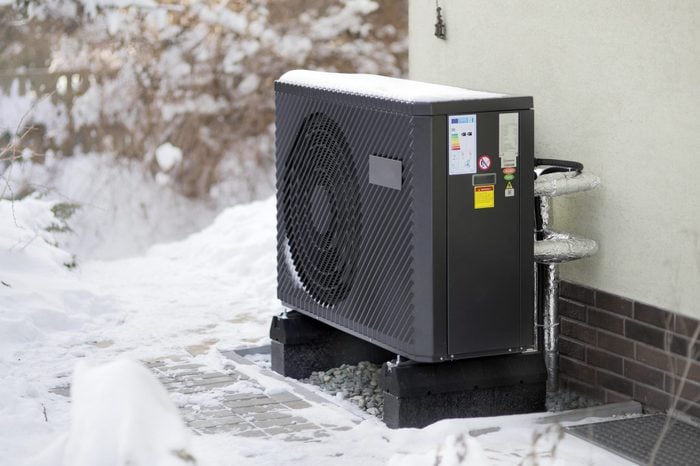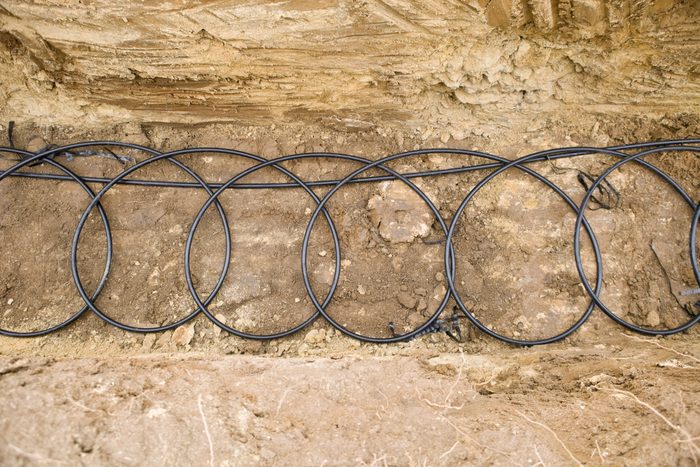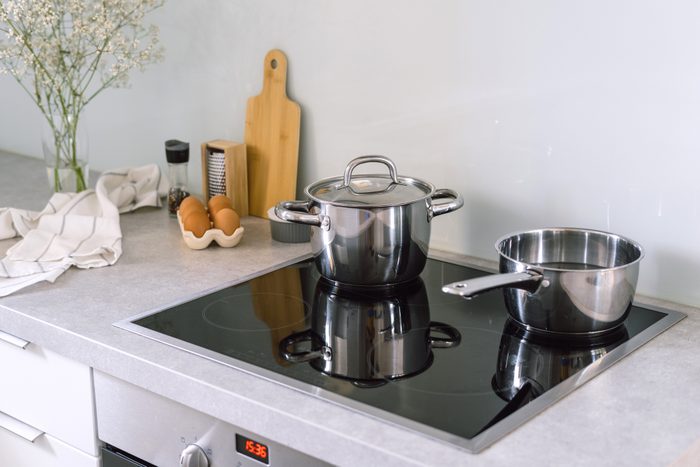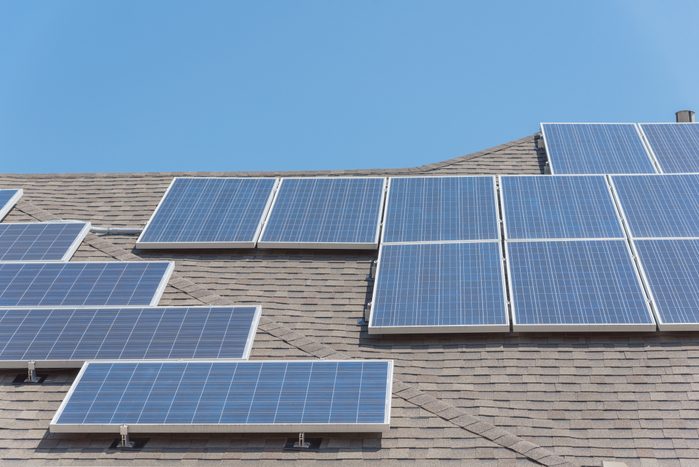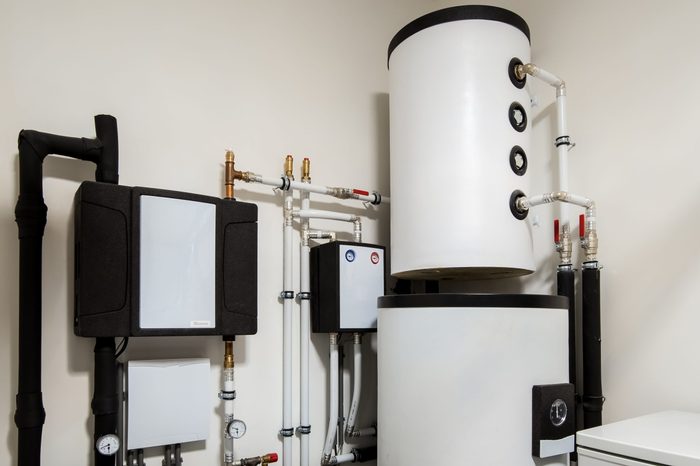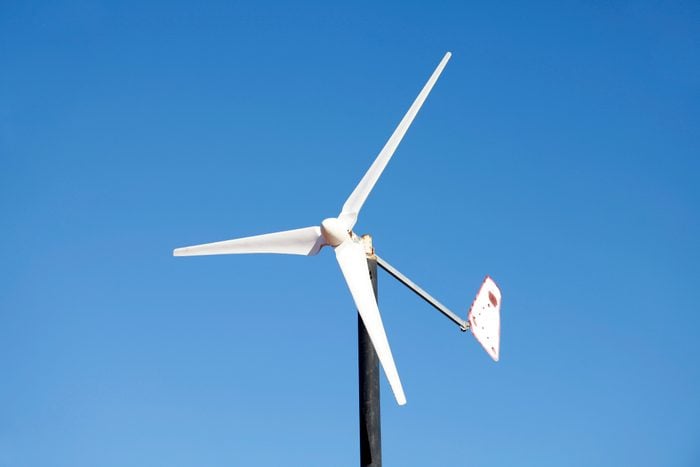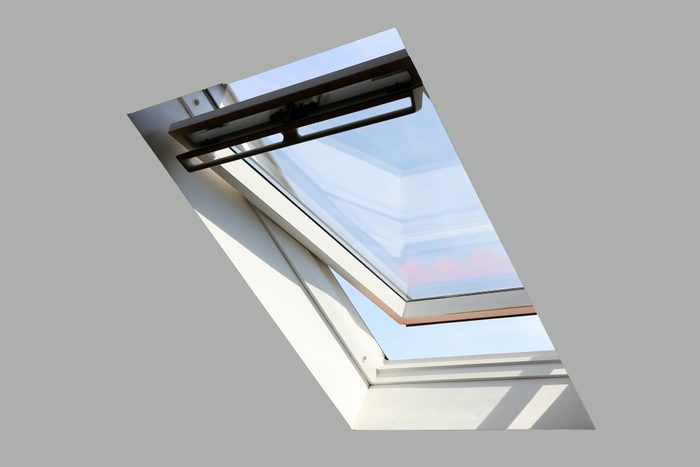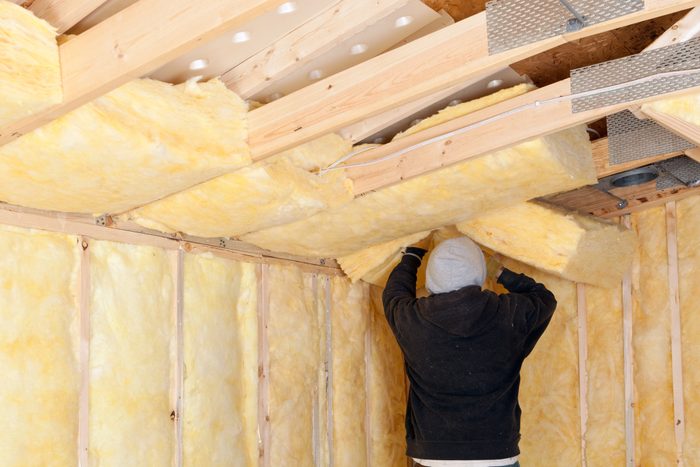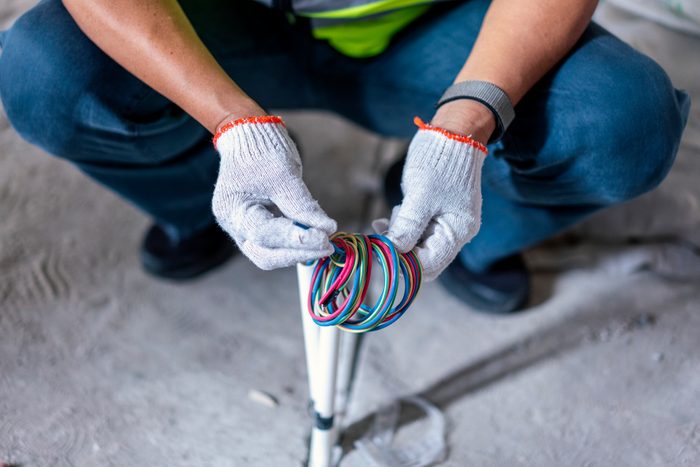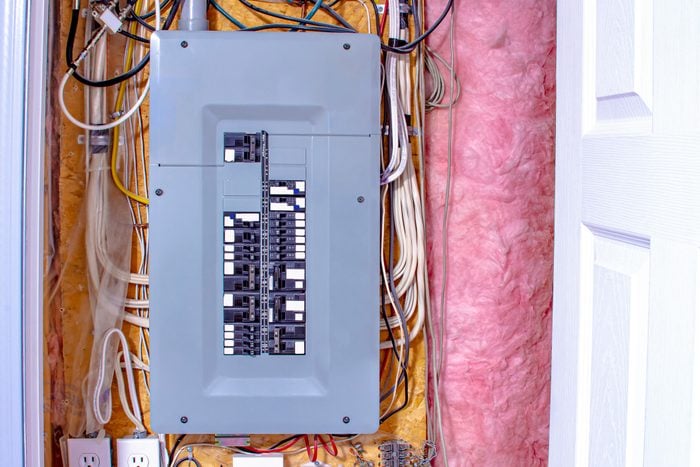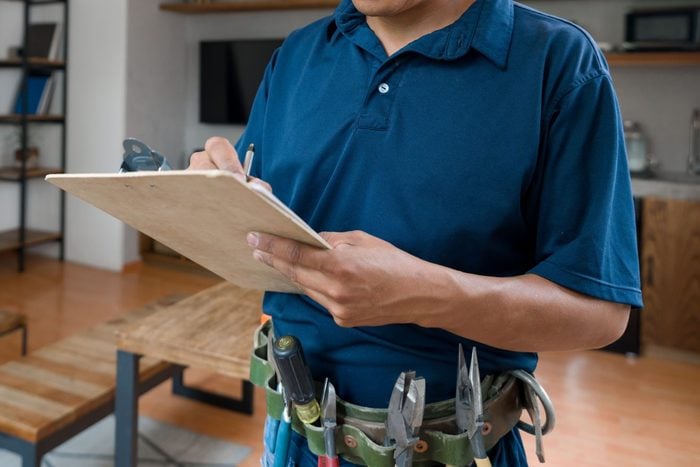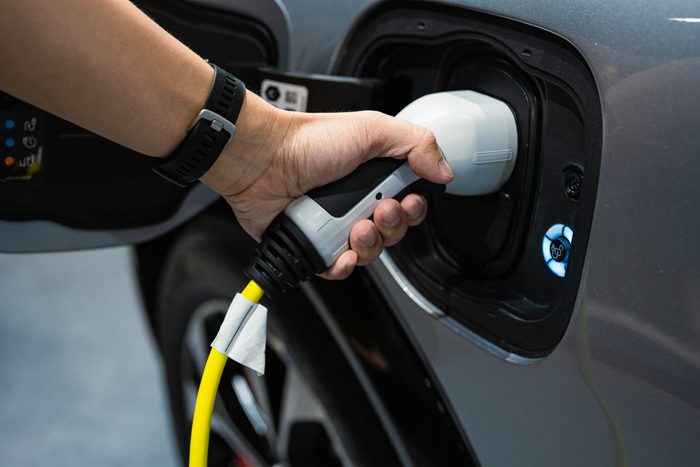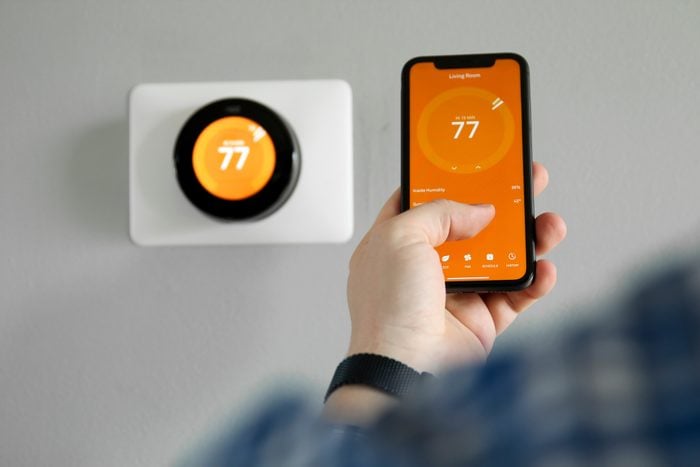Air Source Heat Pumps for HVAC/AC
Electric heat pumps can qualify for 30% of costs, up to $2,000, through 25C. The total cost of a heat pump system can range from about $1,500 to more than $10,000.
According to Angi, the average U.S. homeowner spends around $6,000 to install a heat pump. If yours costs $6,000, than means you’ll save $1,800 and still have another $1,200 in incentives left over for another project in the same year, like a heat-pump water heater. Through the Home Electrification Rebate Program, if you qualify as an LMI household, you can get a rebate of up to $8,000.
In addition, non heat-pump HVAC that meets or exceeds the highest efficiency tier established by the Consortium for Energy Efficiency (CEE) is also eligible for the 30% tax credit, up to $600.
Geothermal Heat Pumps
Through 25D you can get a 30% tax credit for the equipment and installation of a geothermal heat pump. According to Angi, the average cost for one is around $14,000, which means you’d save $4,200. There’s no cap on this incentive.
Electric Cooktops and Stoves, Including Induction
Through the Home Electrification Rebate Program, if you qualify for LMI, you can get a rebate up to $840. Several major brands offer decent stove models for about $1,200, which means the whole range would cost you around $360 in total.
Solar Panels and Solar Home Battery Storage Units
Through 25D you can get a 30% tax credit for the equipment and installation of solar panels and solar home battery storage units. According to Angi, the average cost for solar panels is around $26,000, and the average for batteries is around $10,000. If you installed both, you’d save almost $11,000. There is no cap on this incentive.
Heat Pump Clothes Dryers
Through the Home Electrification Rebate Program, if you qualify as an LMI household you can get a rebate up to $840 on heat pump clothes dryers. These start at around $1,000, which means the whole dryer would cost you $140. This falls under the $14,000 maximum per household, so you can use it and still qualify for other appliance upgrades.
Heat Pump and Other Water Heaters
There are two ways to save with heat pump water heaters. Through 25C, you can get a 30% tax credit up to $2,000, which would make a $2,000 water heater cost just $1,400. Or through the Home Electrification Rebate Program, if you qualify as an LMI household you can have up to $1,750 covered via rebates.
If you have the tax appetite, you can take advantage of the rebate and the incentive. Natural gas, propane and oil water heaters also qualify for 25C, as long as they meet or exceed the highest efficiency tier of the Consortium for Energy Efficiency (CEE). Those are eligible for the 30% tax credit up to $600.
Wind Turbine
Through 25D you can get a 30% tax credit for the equipment and installation of a wind turbine and associated storage batteries. A wind turbine system can start at around $15,000, which means you would save around $4,500 on a basic setup. There is no cap on this incentive.
Exterior Windows, Skylights and Doors
Through 25C, you can get a 30% tax credit, up to $600 annually on exterior windows and skylights that meet Energy Star’s most efficient certification requirements.
For doors, you can get that 30% tax credit up to $250 per door, for a maximum of $500. That means if you buy a $500 door you’ll save $150. If you buy two $800 doors, you’ll save $480. There’s a cap of $1,200 per year for all energy-efficiency home improvements.
Insulation and Air Sealing
Through 25C, you can get a 30% tax credit, up to $1,200 per year on insulation and air sealing costs that make your home more energy efficient. Then, through the Home Electrification Rebate Program, if you qualify as an LMI household, you also get up to $1,600 more for these, including ventilation projects.
There’s a cap of $1,200 per year for all energy-efficiency home improvements.
Home Energy Audit
Through 25C, you can get a 30% tax credit to cover 30% of a home energy audit up to $150. “Home energy audits are one of the best ways to decide which projects you should prioritize, and I always recommend this as a starting point for homeowners,” says Micetich.
Electrical Wiring
Through the Home Electrification Rebate Program, if you qualify as an LMI household you can get a rebate for rewiring part or all of your house. That’s important, since you may need to accommodate the extra power demand from electric appliances and heating systems.
The rebate varies based on household income, with the max being $2,500. Through 25D you can also get a 30% tax credit for installation costs. “Beyond safety, this rebate is a great motivator for homeowners to update their electrical system,” says Micetich.
Breaker Box
Through the Home Electrification Rebate Program, if you qualify as an LMI household you can get a rebate up to $4,000 for a new electrical panel. For those with higher annual incomes, through 25C you can still get a 30% tax credit, up to $600 per year. According to Angi, the average cost to replace one is around $1,200.
Contractor Rebates
Through the Home Electrification Rebate Program, if you qualify as an LMI household your contractor will be eligible for a rebate of up to $500. Also, under the Home Efficiency Rebate Program, contractors can get an additional $200 per installation to serve homes in designated disadvantaged communities.
Electric Vehicles
Through an additional incentive, 30D, you can get a $7,500 tax credit for qualifying electric and hybrid plug-in passenger vehicles. They must be assembled in North America and meet certain eligibility requirements regarding battery components and critical minerals.
You are only eligible for this if you make less than $150,000 per year (individual) or $300,000 (joint filers), and you must buy a car that costs less than $55,000 ($80,000 for trucks and SUVs).
There is also an incentive for installing EV chargers. It’s 30% up to $1,000 if you live in a qualifying location — a non-urban area; a census tract where the poverty rate is at least 20%; or a metropolitan and non-metropolitan area census tract where the median family income is less than 80% of the state medium family income level.
What Doesn’t Qualify Under the IRA?
Some items don’t qualify under 25C, 25D or the Home Electrification Rebate Program. However, if you retrofit your home with them and they make it more energy efficient overall, it may pay out under the Home Efficiency Rebate Program, once that’s available in your state.
Some of those energy savers include:
- Cool roofs;
- Energy-efficient dishwashers;
- Shade trees and drought-resistant plants;
- Radiant floor heating;
- Energy-efficient refrigerators and freezers;
- Smart thermostats;
- Whole house fans.
The Fine Print
In case you thought this was all too simple — just kidding, we know it’s not — here are a few more things to keep in mind:
- The Electrification Rebate and Efficiency Rebate program incentives cannot be combined to cover the same equipment costs, but LMI customers may take advantage of both rebates for different equipment.
- The percentage of rebates with the Home Electrification Rebate Program varies based on income: up to 100% of costs, including installation, for low-income (defined as <80% of AMI) or up to 50% of costs for moderate income (80% to 150% AMI).
- Timelines: For the Electrification Rebate and Efficiency Rebate programs, the Department of Energy will issue guidance to states by summer 2023. After that, states can submit their plans back to the DOE by August 2024. Once approved, the DOE will release money to the states to implement those programs.
- In some cases, state rebates are considered taxable income. Be sure to consult a tax accounting professional when you file your taxes if you receive any rebates, whether via IRA, your state or utility.

